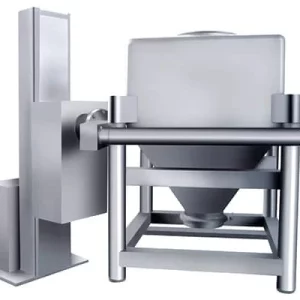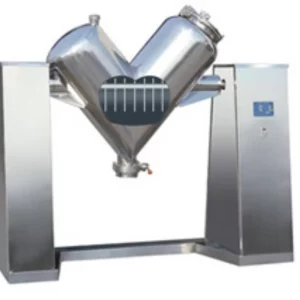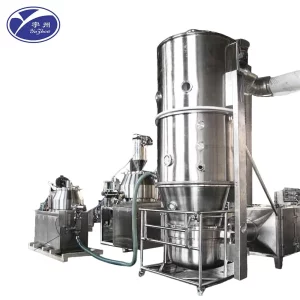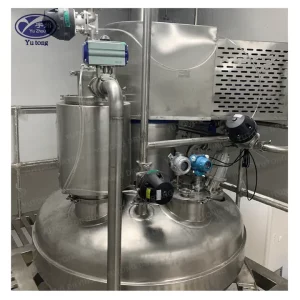collide oxyfuel Vattenfall plant naoh spray dryer
The evolution of carbon capture and storage (CCS) technology is a testament to humanity’s commitment to a sustainable future. At the forefront of this technological revolution are projects like the Callide Oxyfuel Project in Australia and Vattenfall’s pioneering efforts in Germany. A critical component of these initiatives is the NaOH spray dryer, a device designed to enhance the efficiency of oxyfuel combustion and reduce harmful emissions. This article delves into the intricate mechanisms of the NaOH spray dryer and its pivotal role at the Vattenfall oxyfuel plant in Germany, showcasing how this technology is shaping the future of energy production.
Understanding Oxyfuel Combustion
Oxyfuel combustion represents a significant leap forward in the quest to reduce CO2 emissions from power plants. This cutting-edge technique differs from traditional methods by utilizing pure oxygen instead of air, resulting in a more efficient and cleaner burn.
The Science Behind Oxyfuel Combustion
In traditional combustion processes, air—which is 78% nitrogen—is used, leading to the production of nitrogen oxides (NOx) and other pollutants. Oxyfuel combustion, however, eliminates nitrogen from the equation, significantly reducing NOx emissions. By burning fuel in a mixture of oxygen and recycled CO2, the process becomes highly efficient, producing a flue gas primarily composed of water vapor and CO2.
Environmental Benefits of Oxyfuel Combustion
Oxyfuel combustion has profound environmental implications. By reducing the nitrogen content in the combustion process, the technology significantly lowers the emission of nitrogen oxides, known contributors to smog and acid rain. Furthermore, the predominance of CO2 and water vapor in the flue gas simplifies the carbon capture process, facilitating more straightforward and more cost-effective storage.
Global Adoption and Impact
The global energy landscape is witnessing a gradual but steady shift towards oxyfuel combustion. Countries are increasingly recognizing its potential to meet climate goals by lowering carbon footprints while maintaining energy production levels. This shift is bolstered by international agreements and policies aimed at mitigating climate change, encouraging more countries to adopt this transformative technology.
The Role of the Callide Oxyfuel Project
The Callide Oxyfuel Project in Australia serves as a beacon of innovation, demonstrating the commercial viability of oxyfuel technology. This project has laid the groundwork for similar initiatives worldwide, providing invaluable insights and data that drive ongoing CCS technology developments.
Retrofitting for Success
One of the project’s most significant achievements is the successful retrofitting of an existing coal-fired power plant to incorporate oxyfuel combustion. This retrofit not only proved the practicality of upgrading existing infrastructures but also provided a blueprint for other energy companies looking to reduce their carbon footprint without building new facilities from scratch.
Pioneering Research and Development
The Callide Oxyfuel Project has been instrumental in advancing research and development in CCS technology. Through rigorous testing and analysis, the project has generated critical data on the efficiency and effectiveness of oxyfuel combustion, contributing to the global knowledge pool and informing future technological innovations.
Influence on Global CCS Initiatives
The project’s success has resonated globally, inspiring similar efforts in other countries, including Germany’s Vattenfall plant. By demonstrating the feasibility of CCS technology on a commercial scale, the Callide Oxyfuel Project has positioned itself as a catalyst for change in the global energy sector, encouraging widespread adoption of sustainable practices.
Vattenfall’s Oxyfuel Plant in Germany
Vattenfall, a leading energy company in Europe, has embraced oxyfuel combustion technology, positioning its plant in Germany as a model for sustainable energy production. This plant exemplifies how traditional coal-fired power plants can be transformed to reduce their carbon footprint significantly.
A Commitment to Sustainability
Vattenfall’s commitment to sustainability is evident in its strategic integration of oxyfuel combustion technology. By investing in advanced emission control measures, the company is setting a new standard for environmentally responsible energy production, aligning its operations with global climate goals.
Technological Innovations at the Plant
The Vattenfall oxyfuel plant is a hub of technological innovation. It showcases the potential of oxyfuel combustion and serves as a testing ground for new advancements in CCS technology. This continuous drive for innovation ensures that Vattenfall remains at the forefront of the energy sector’s transition towards sustainability.
A Blueprint for Future Energy Production
As a leader in the adoption of oxyfuel technology, Vattenfall’s plant serves as a blueprint for other energy companies worldwide. By demonstrating the viability and benefits of this technology, Vattenfall is encouraging other companies to follow suit, fostering a global movement towards cleaner, more efficient energy production.
The Importance of NaOH Spray Dryers
NaOH spray dryers are integral to the Vattenfall oxyfuel plant’s emission control strategy. These devices play a crucial role in reducing the release of pollutants, enhancing the plant’s overall efficiency, and complying with environmental regulations.
Mechanisms of Emission Control
The primary function of NaOH spray dryers is to neutralize acidic gases within the flue gas stream. By introducing a fine mist of NaOH solution, these devices facilitate chemical reactions that transform harmful substances into benign byproducts. This process significantly reduces the emission of pollutants like sulfur dioxide (SO2), contributing to cleaner air quality.
Enhancing Carbon Capture Efficiency
In addition to controlling emissions, NaOH spray dryers enhance the efficiency of carbon capture. By managing the composition of flue gases, these devices make it easier to separate and store CO2, streamlining the overall carbon capture process. This efficiency is crucial for meeting environmental regulations and achieving sustainability goals.
Compliance with Environmental Standards
The use of NaOH spray dryers is essential for compliance with increasingly stringent environmental regulations. By effectively reducing emissions, these devices enable power plants to meet compliance standards, avoiding potential fines and operational shutdowns. This compliance not only benefits the environment but also ensures the continued operation of energy production facilities.
How NaOH Spray Dryers Work
Understanding the operation of NaOH spray dryers is key to appreciating their role in emission control. These devices work by atomizing a sodium hydroxide solution into tiny droplets, which then interact with the flue gases to capture and neutralize acidic compounds.
Atomization Process
The atomization process is central to the functionality of NaOH spray dryers. By creating a fine mist of sodium hydroxide solution, the device maximizes the surface area for reactions, ensuring efficient neutralization of acidic gases. This process is critical for achieving the desired emission reduction outcomes.
Chemical Reactions and Byproducts
When the NaOH droplets interact with flue gases, they initiate a series of chemical reactions that convert harmful substances into safer compounds. For example, the reaction with sulfur dioxide produces sodium sulfate, a benign byproduct that can be safely managed or repurposed for other industrial applications. This conversion is a cornerstone of the device’s emission control capabilities.
Integration in the Plant’s Infrastructure
The seamless integration of NaOH spray dryers into the plant’s infrastructure is essential for their effective operation. These devices are strategically positioned within the flue gas stream to maximize their impact, ensuring optimal performance and contributing to the plant’s overall emission reduction strategy.
The Benefits of NaOH Spray Dryers in Oxyfuel Plants
The integration of NaOH spray dryers in oxyfuel plants offers a range of benefits, from emission reduction to improved efficiency and regulatory compliance.
Significant Emission Reduction
NaOH spray dryers play a pivotal role in reducing emissions of pollutants like sulfur dioxide. By neutralizing these acidic gases, the devices contribute to cleaner air quality, supporting public health and environmental protection efforts. This reduction is vital for meeting both local and international air quality standards.
Efficiency Enhancements
NaOH spray dryers’ ability to manage flue gas composition enhances the efficiency of the carbon capture process. By facilitating easier separation and storage of CO2, these devices streamline the overall operation of oxyfuel plants, enabling them to maintain energy production levels while minimizing their environmental impact.
Compliance with Stringent Regulations
In a world where environmental regulations are becoming increasingly stringent, NaOH spray dryers provide an effective solution for compliance. By reducing emissions to acceptable levels, these devices help power plants meet regulatory standards, avoid potential fines, and ensure uninterrupted operations.
Promoting a Circular Economy
The byproducts generated by NaOH spray dryers can be repurposed for other industrial applications, promoting a circular economy approach. By transforming waste into valuable resources, these devices contribute to a more sustainable and resource-efficient energy production model.
Challenges and Future Prospects
While NaOH spray dryers offer numerous benefits, there are challenges to consider, such as implementation costs and the need for ongoing research. However, the prospects for this technology remain promising as it continues to evolve.
Cost Considerations
The initial cost of implementing NaOH spray dryers can be significant, posing a barrier for some energy companies. However, as the technology matures and more plants adopt it, economies of scale are expected to drive down costs, making it more accessible to a broader range of facilities.
Research and Development Needs
Ongoing research and development are crucial for optimizing the efficiency and effectiveness of NaOH spray dryers. By investing in innovation, the industry can unlock new possibilities for enhancing emission control and carbon capture, ensuring the technology remains at the cutting edge of environmental protection efforts.
The Role of Collaboration
Collaboration between energy companies, research institutions, and policymakers is essential for advancing the prospects of NaOH spray dryers. By working together, these stakeholders can share knowledge, resources, and expertise, driving the development of more efficient and sustainable CCS technologies.
The Future of CCS Technology
The successful integration of NaOH spray dryers at the Vattenfall oxyfuel plant in Germany marks a significant step forward in the deployment of CCS technologies. As global efforts to combat climate change intensify, the role of CCS in reducing industrial emissions will become increasingly vital.
Advancements in CCS Technology
The field of CCS technology is rapidly advancing, with innovations and improvements emerging regularly. These advancements are enhancing the efficiency and effectiveness of carbon capture, making it a more viable solution for reducing industrial emissions and combating climate change.
Global Impact and Adoption
As more countries recognize the importance of CCS technology in achieving their climate goals, global adoption is expected to increase. This widespread adoption will not only reduce carbon emissions on a worldwide scale but also drive further innovations and improvements in the technology.
Vattenfall’s Leadership Role
Vattenfall’s commitment to advancing oxyfuel technology and emission control measures serves as an inspiring example for other energy companies worldwide. By continuing to invest in research and development, Vattenfall is helping to lead the charge towards a cleaner, more sustainable energy future.
Conclusion
The Callide Oxyfuel Project and Vattenfall’s innovative use of NaOH spray dryers in Germany highlight the transformative potential of CCS technologies in reducing carbon emissions. By integrating these advanced systems, power plants can significantly minimize their environmental impact while maintaining energy production levels.
Achieving Global Climate Goals
As we move towards a more sustainable energy landscape, the role of NaOH spray dryers and oxyfuel combustion will undoubtedly remain pivotal in achieving our global climate goals. These technologies offer a promising path forward, enabling us to reduce emissions and transition to cleaner energy production methods.
The Path Forward
In conclusion, the ongoing efforts at the Vattenfall oxyfuel plant exemplify the progress being made in emission control and carbon capture. Through continued innovation and collaboration, we can build a more sustainable and environmentally friendly energy future. By embracing these technologies, we can pave the way for a cleaner, healthier planet for future generations.




